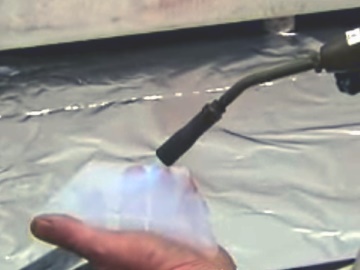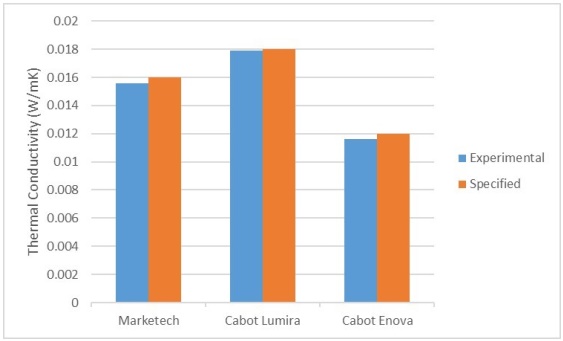What Is Aerogel? How To Analyze Aerogel?

Aerogel is a kind of nano-scale ultra-lightweight porous solid man-made foamed material, based on silicon dioxide. It is made from the jelly-like silicon gel, after extract most of the liquid components, after dried out of it, a 3D three-dimensional mesh structure of aerogel is obtained. There are 99% of the interior space full of air, and the density of aerogel is only 3mg/cm3. It is conceivable that the aerogel has light weight and a large surface area inside. However, aerogel is not soft nor fragile. In fact, it has excellent loading ability. Once the external force exceeds its capability the aerogel will break like a glass.
Based on the above porous properties, aerogels are excellent thermal insulation materials. Under the general ambient 1 atm pressure, the thermal conductivity of aerogel is about 0.02 W/mK, which is better than PU foam thermal insulation materials. In the flame, an aerogel will not burn, but only carbonized from high temperature. Although an aerogel has good thermal insulation property, however, it has poor heat radiation insulation capability.
Since the interior of the aerogel is full of air, its refractive index is low, which is closer to the air, and its light transmission is good. In dark environment, it reflectes soft blue color, and light yellow in a bright environment. In addition, aerogels have a strong ability to absorb water. Put a aerogel on hands, one can feel dry on the skin. But applying the soaking chemical process onto the aerogels, can turn it into a hydrophobic materials.
At present, aerogels have been used in various applicatons, such as thermal and fire protection materials, thermal insulation materials, capacitors, drug release materials, bulletproof coatings, radar wave absorbing materials, and energy storage materials. In the research of these applications, the main focus is to investigate the thermal conductivity and its physical properties (density, pressure resistance, quality, etc.) of aerogels.
There are some various methods for measuring the thermal conductivity, such as transient plane source (TPS), laser flash, and time-domain heat reflection. The modern modified transient plane source (MTPS) provides a better faster way to measure the thermal conductivity property, in which has the heat source and the sensor on the same side of the sample surface. The Canadian Thermal Analyzer manufacture, C-Therm is leader of TPMS analyzer. With C-Therm's TCi Thermal Conductivity Analyzer, one only needs to place the sensor head onto the plane of the sample (or reversly put the same onto the sensor). Within a few seconds, the thermal conductivity of the sample can be measured. TCi can also measure the sampels in form of solid, liquid, powder, and colloidal.
The smallest sample size allows is approximately 18mm square (0.71 inches). TCi thermal conductivity analyzer has a measurement module specifically designed for aerogels, which can optimize the aerogel measurement with a lower limit of the minimum range, say, 0.01W/mK. TCi is the best thermal conductivity analyzer for aerogel research. The following test results of TCi thermal conductivity analyzer shows the difference from the specification of three aerogel product in the market, which is less than 4%. TCi thermal conductivity provide a fast and high precision way for aerogel analyzing.

To learn more about the TCi thermal conductivity analyzer, please visit the TCi Thermal Conductivity Products webpage, or contact to ACTTR Technology. We will be more than happy to serve you!


